‘THE POSSIBILITIES ARE ENDLESS’: ENERGY EXPERT LAUNCHES NEW BOOK ON RESOLVING MARITIME BOUNDARIES
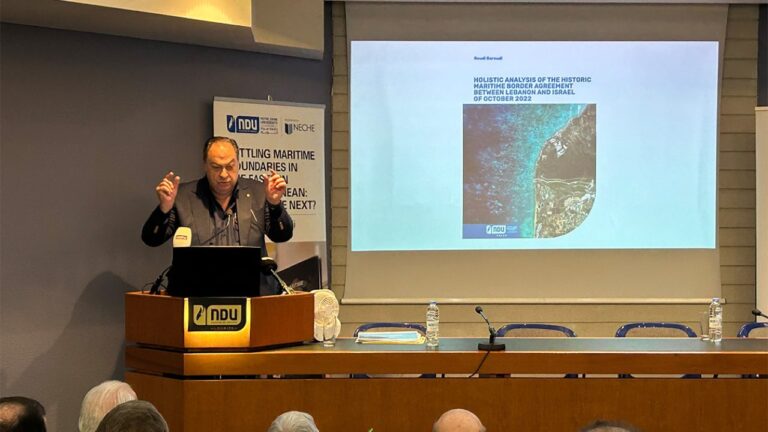
ZOUK MOSBEH, 23-04-2025: Energy expert Roudi Baroudi signed copies of his latest book during a launch event at Notre Dame University – Louaize on Wednesday.
The book, “Settling Maritime Boundaries in the Eastern Mediterranean: Who Will Be Next?”, is part of Baroudi’s years-long effort to promote regional energy cooperation. In it, the author makes the case that if East Med countries are serious about exploiting their offshore hydrocarbons, they need to settle their maritime borders in order to attract the major energy companies whose technical and financial muscle are virtual prerequisites for undersea oil and gas activities.
Co-hosted by the Office of NDU Publications (which published the book) and the university’s Office of Research and Graduate Studies, the signing event took place at NDU’s Pierre Abou Khater Auditorium. All proceeds from sales of the book will go toward Student Financial Aid at NDU.
Inspired by the landmark US-brokered October 2022 agreement that saw Lebanon settle most of its maritime boundary with old foe Israel, the new tome stresses the need to define other East Med borders as well, including those between Lebanon and Cyprus, Lebanon and Syria, Syria and Cyprus, Cyprus and Turkey, and Turkey and Greece.
Publication was delayed by the outbreak of the Gaza war in October 2023, but the author says that conflict – which also led to massive destruction and loss of life in Lebanon – only underlines the need for regional players to find a new modus vivendi.
“We can’t keep doing the same things over and over again, and then expecting a different outcome,” Baroudi said during the NDU event. “For the first time in many years, all of Lebanon’s branches of government – Parliament, Cabinet, and Presidency – are fully functional. We have to start thinking of ways to reduce the scope for friction, to open the way for foreign investment, and hopefully start producing offshore gas.”
“Almost all of Lebanon’s energy needs are met by imported hydrocarbons; imagine if we discover enough gas to provide 24/7 electricity to all Lebanese,” he added. “And what if we had enough to start exporting it, too? Lebanon’s coast is less than 100 kilometers from Cypriot waters: this means that once the island and its partners have built a pipeline and/or a liquified natural gas plant, Lebanese gas could flow straight into the entire European Union, one of the world’s largest energy markets. The possibilities are endless. And now imagine all of the countries of the region having similar prospects – just because they finally got around to figuring out where their national waters begin and end.”
In addition to the manifold benefits of energy security and lucrative export revenues to fund domestic investment in things like education, healthcare, fighting poverty, and transport, Baroudi said the exercise of negotiating sea borders could help build trust and good will.
“There isn’t enough of those commodities in the East Med region, and often for good reason,” he explained. “But we have to start somewhere, and maritime boundaries are a great place to do that because they open the way for investment and various forms of cooperation, direct or indirect, including fisheries monitoring and regulation, marine protected areas, tourism, weather forecasting, search and rescue, etc.”
With more than 47 years of experience, Baroudi has worked in multiple fields, from electricity, oil and gas, and petrochemicals to pipelines, renewables, and carbon pricing mechanisms. He also has led policy and program development with, among others, the World Bank, the US Agency for International Development, the International Monetary Fund, and the European Commission. The author of several books – including “Climate and Energy in the Mediterranean: What the Blue Economy Means for a Greener Future” (2022) – as well as numerous studies and countless articles, his expertise has made him a highly sought-after speaker at regional energy and economic conferences. Currently serving as CEO of Energy and Environment Holding, an independent consultancy based in Doha, he is also a Senior Fellow of the Transatlantic Leadership Network, a Washington think-tank. In 2023, he received the TLN’s Leadership Award in recognition of his efforts to promote peace.

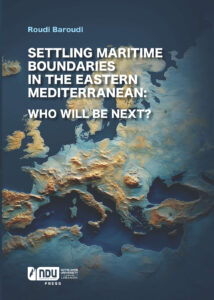
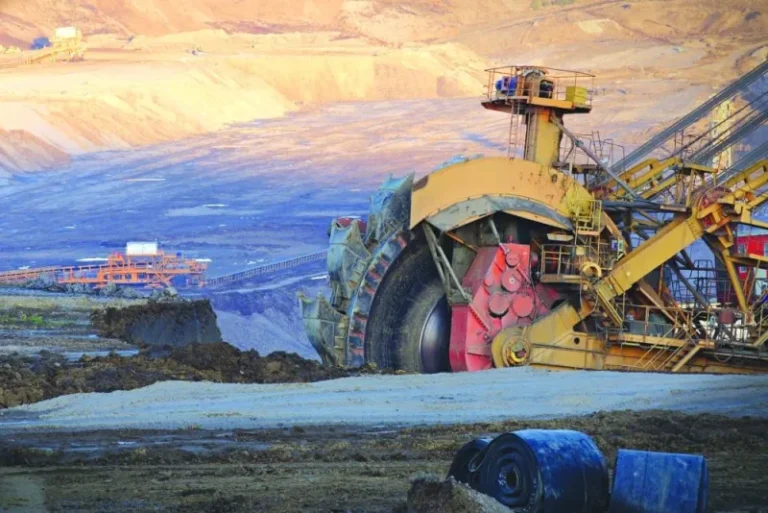
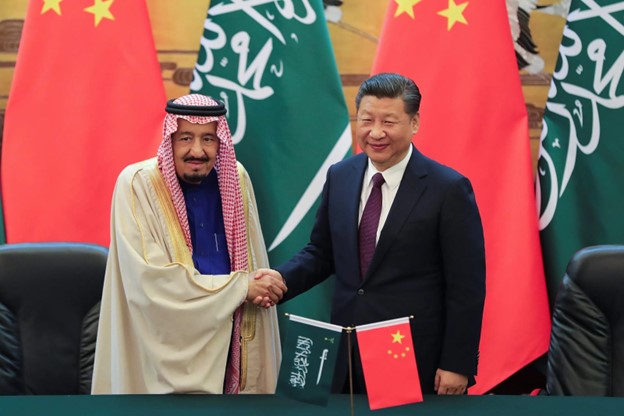

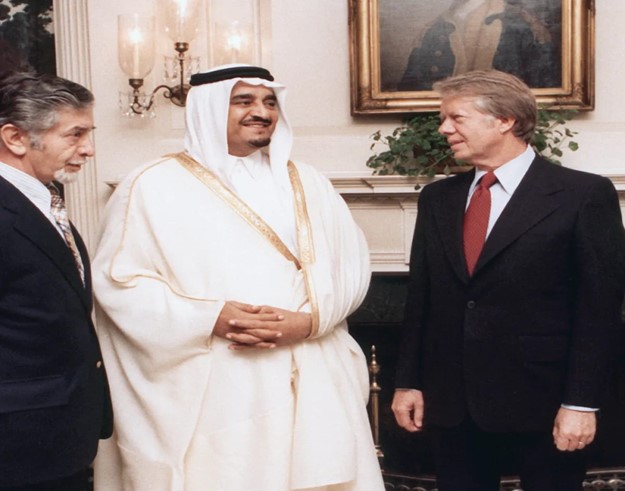

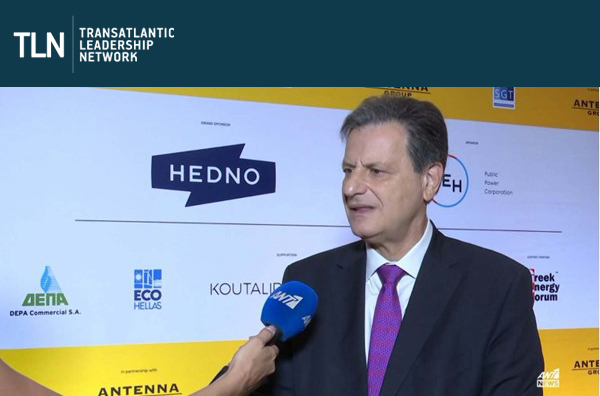


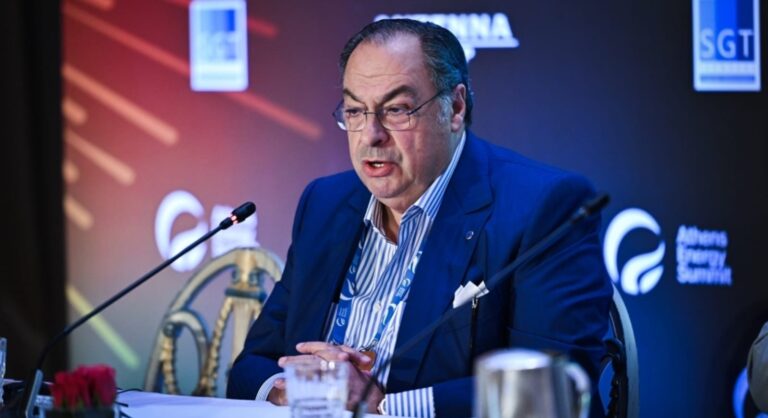




CAMBRIDGE – The recent passing of psychologist and Nobel laureate Daniel Kahneman is an apt moment to reflect on his invaluable contribution to the field of behavioral economics. While Alexander Pope’s famous assertion that “to err is human” dates back to 1711, it was the pioneering work of Kahneman and his late co-author and friend Amos Tversky in the 1970s and early 1980s that finally persuaded economists to recognize that people often make mistakes.
When I received a fellowship at Stanford University’s Center for Advanced Study in the Behavioral Sciences (CASBS) four years ago, it was this fundamental breakthrough that motivated me to choose the office – or “study” (to use CASBS terminology) – that Kahneman occupied during his year at the Center in 1977-78. It seemed like the ideal setting to explore Kahneman’s three major economic contributions, which challenged economic theory’s apocryphal “rational actor” by introducing an element of psychological realism into the discipline.
Kahneman’s first major contribution was his and Tversky’s groundbreaking 1974 study on judgment and uncertainty, which introduced the idea that “biases” and “heuristics,” or rules of thumb, influence our decision-making. Instead of thoroughly analyzing each decision, they found, people tend to rely on mental shortcuts. For example, we may rely on stereotypes (known as the “representativeness heuristic”), be overly influenced by recent experiences (the “availability heuristic”), or use the first piece of information we receive as a reference point (the “anchor effect”).
Second, Kahneman and Tversky’s work on “prospect theory,” which they published in 1979, critiqued expected utility theory as a model of decision-making under risk. Drawing on the “certainty effect,” Kahneman and Tversky argued that humans are psychologically more affected by losses than gains. The perceived loss from misplacing a $20 note, for example, would outweigh the perceived gain from finding a $20 note on the sidewalk, leading to “loss aversion.”
This insight is also at the core of the “framing effect.” The theory, developed while Kahneman was a fellow at CASBS and Tversky was a visiting professor at Stanford, posits that the way information is presented – whether as a loss or a gain – significantly influences the decision-making process, even when what is framed as a loss or gain has the same value.
Lastly, there is Kahneman’s popular masterpiece, the bestselling Thinking, Fast and Slow. Published in 2011 and offering a lifetime’s worth of insights, the book introduced the general public to two stylized modes of human decision-making: the “quick,” instinctive, emotional mode that Kahneman called System 1, and the “slower,” deliberative, or logical mode, which he called System 2. Humans, he showed, are prone to abandoning logic in favor of emotional impulses.
Kahneman received the Nobel Prize in Economics in 2002, despite, as he jokingly remarked, having never taken a single economics course. Nevertheless, his scholarship laid the groundwork for an entirely new field of economic research – and it had all begun in Study 6.
In particular, Kahneman’s work had a profound impact on University of Chicago economist Richard Thaler, who went on to become a Nobel laureate himself. As an assistant professor, Thaler managed to “finagle” a visiting appointment at the National Bureau of Economic Research, whose offices were located down the hill from CASBS, enabling him to connect with Kahneman and Tversky.
In 1998, Thaler co-authored a seminal paper with Cass Sunstein and Christine Jolls, introducing the concept of “bounds” on reason, willpower, and self-interest, and highlighting human limitations that rational-actor models had overlooked. By the time he received the Nobel Prize in 2017, Thaler had systematically documented “anomalies” in human behavior that conventional economics struggled to explain and conducted highly influential research (with Sunstein) on “choice architectures,” popularizing the idea that subtle design changes (“nudges”) can influence human behavior.
But as I gazed at the sweeping views of Palo Alto and the San Francisco Peninsula from the office window at CASBS, the birthplace of behavioral economics, I could not help but wonder whether Kahneman, despite his famously gentle nature, had perhaps been too critical of human decision-making. Are all deviations from “pure” economic logic necessarily “irrational”? Is our inability to align with the idealized model of economic analysis, coupled with our inevitable – albeit predictable – irrationality, really an inherent weakness? And is our tendency to rely on emotions rather than reason a fatal flaw, and if so, could our susceptibility to instinct ultimately lead to our downfall?
I wish I could ask Kahneman these questions. During my time there in 2020-21, Kahneman, affectionately known as “Danny” to all, was not just what CASBS called a “ghost” of the “study” – a former occupant who had been a major influence on my work – but also, happily, a vibrant, living legend who had enthusiastically invited me to discuss these very issues in person. Looking back, I regret my “planning fallacy” in not taking him up on his offer to deepen our conversation sooner – a sentiment shared by both my System 1 and System 2 modes. If “to err is human,” Danny taught me a poignant final lesson in human error.